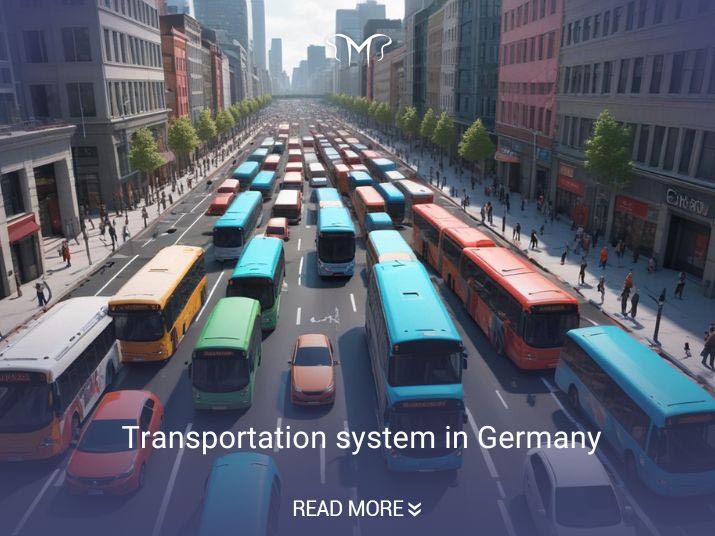
Everything about the transportation system in Germany
Germany, with one of the most advanced transportation systems in the world, has established a vast and well-organized network of public and private transport facilities. The public transportation system in Germany includes high-speed trains (ICE), local trains (S-Bahn), subways (U-Bahn), buses, and trams, all of which operate with high precision and punctuality. Germany's numerous highways, equipped with cutting-edge technologies, provide quick and easy access to all parts of the country. Additionally, the use of bicycles and dedicated bike paths is prevalent in many cities, helping to reduce traffic and protect the environment. Germany's public transportation system, combining modern facilities with meticulous planning, is recognized as one of the best in the world. Join us in this article as we explore Germany's public transportation system.
Types of Transportation in Germany
Utilizing the public transportation system is considered the best method of transportation in Germany, encompassing various forms of public and private transport as outlined below:
-
High-speed trains (ICE)
-
Local and regional trains (S-Bahn and RE)
-
Subway (U-Bahn)
-
Tram (Tram)
-
Bus
-
Bicycle
-
Personal vehicles
-
Taxis and online transportation services
Subway or Underground Train (U-Bahn)
The subway or underground train system, known as the U-Bahn, is one of the most important and efficient public transportation methods in major German cities. This system operates in key cities such as Berlin, Munich, Hamburg, Frankfurt, and Nuremberg, playing a crucial role in the daily commute of millions of people.
The U-Bahn system consists of an extensive network of lines and stations that cover nearly all parts of the city. This network typically includes underground lines and sometimes above-ground lines as well. U-Bahn trains run regularly and at short intervals, with peak hours seeing trains arriving even less than a few minutes apart.
Due to operating on dedicated tracks and not interfering with street traffic, the U-Bahn boasts high speed and efficiency. Additionally, U-Bahn stations are usually equipped with modern amenities and conveniences such as elevators, escalators, guide signs, route maps, and real-time information systems. The U-Bahn typically passes through major urban centers, including commercial areas, office districts, universities, hospitals, and tourist attractions.
Suburban Train (S-Bahn)
The suburban train system, known as the S-Bahn, is one of the main and most popular means of transportation within Germany's public transport network, especially for commuting between urban areas and the suburbs. This system operates in many major cities and metropolitan areas, including Berlin, Munich, Hamburg, Frankfurt, and Stuttgart, playing a significant role in reducing traffic congestion and facilitating access to various regions.
The S-Bahn system comprises an extensive and complex network of rail lines that connect central cities with suburban areas. These lines typically pass through central city stations and extend to the suburbs and even neighboring towns.
S-Bahn stations often overlap with U-Bahn (subway) stations, trams, and buses, providing seamless connectivity.
S-Bahn trains run at regular and short intervals, particularly during peak hours, where trains may arrive every few minutes. The stations are usually equipped with modern amenities and conveniences, such as guide signs, real-time information systems, escalators, and elevators. The S-Bahn ticketing system is automated and electronic, allowing passengers to purchase various types of tickets, including single-use, daily, weekly, or monthly passes. Fares are usually determined based on zones and distances traveled.
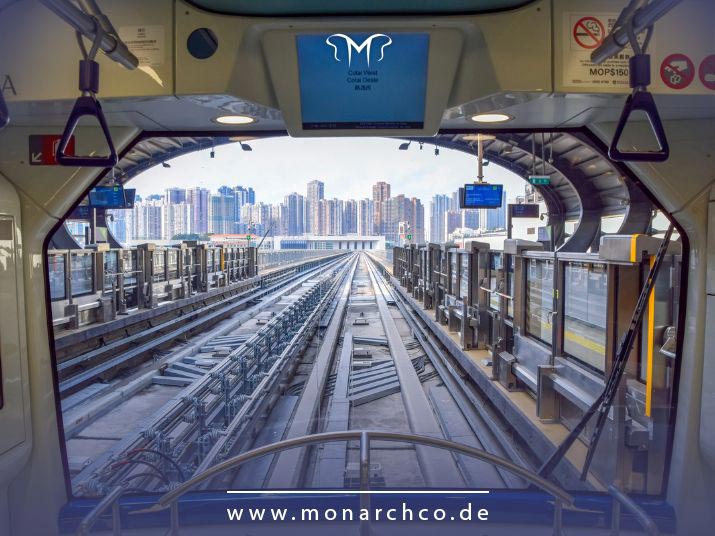
Bus
Buses are one of the primary modes of public transportation in Germany, efficiently covering a vast network of cities, suburban areas, and even rural regions. The bus system in Germany is highly popular due to its precise planning, regular scheduling, and high-quality services, complementing other public transport systems such as high-speed trains (ICE), suburban trains (S-Bahn), and subways (U-Bahn).
Types of buses in Germany include:
-
City Buses: These buses operate within cities and have numerous stops throughout urban areas. They usually run at short intervals and are especially useful during peak traffic hours.
-
Intercity and Suburban Buses: These buses are used for longer journeys between cities and suburban areas. They typically have fewer stops and cover longer distances. Intercity bus services are often provided by private companies like FlixBus.
-
Night Buses (Nachtbus): In many major cities, night bus services are available, operating during late-night and early-morning hours, covering routes that are not served by trains and subways at those times.
Tram (Straßenbahn/Trambahn)
The tram or electric train (Straßenbahn/Trambahn) is a popular and efficient public transportation method in many German cities. Combining the features of buses and trains, trams play a significant role in urban passenger transport due to their extensive accessibility, high efficiency, and eco-friendliness.
Trams operate in numerous German cities such as Berlin, Munich, Frankfurt, Dresden, Stuttgart, and Nuremberg. The tram network usually consists of extensive lines stretching from the city center to various urban and suburban areas. Tram stops are typically located close to one another and are often near key urban points such as shopping centers, universities, hospitals, and residential areas.
Trams run at regular and precise intervals, with schedules available at the stops and online. Tram tickets can be purchased electronically through automated machines, mobile apps, or online, and fares are usually determined based on zones and distances traveled.
Stadtbahn or Light Rail
The Stadtbahn or light rail is a type of rail transportation in Germany's public transport system, offering high flexibility and designed primarily for urban and suburban passenger commuting.
The Stadtbahn system is active in many major German cities such as Cologne, Düsseldorf, Stuttgart, and Dortmund. These networks generally cover longer routes and wider areas compared to trams, connecting more regions together.
Stadtbahn trains run regularly and punctually, and passengers can easily access schedule information online or at stations. Due to their dedicated tracks, Stadtbahn trains offer higher speed and efficiency compared to trams.
Regional Trains, IC, and ICE in Germany
Germany's rail transportation system encompasses several types of trains designed for different purposes and distances. These trains include Regional trains, InterCity (IC), and InterCity Express (ICE).
Regional Trains
Regional trains include both regular and fast regional trains in Germany. Regular regional trains (Regionalbahn - RB) provide local and regional transportation services, often operating on shorter routes between cities and nearby villages. Regional-Express (RE) trains also provide regional services but with fewer stops and higher speeds compared to RB trains.
InterCity Trains (IC)
These trains are designed for longer-distance intercity travel, connecting major and important cities across Germany. They operate at high speeds and make fewer stops compared to regional trains.
InterCity Express (ICE)
Known as the fastest and most luxurious trains in Germany, ICE trains are designed for both domestic and international intercity travel. They travel at very high speeds and only stop at major and significant stations.
These diverse train types cater to various travel needs within Germany, offering efficient and comfortable transportation options across different distances and destinations.
Buying Tickets at the Station
At most train, metro, and tram stations, ticket vending machines are available. These machines are usually multilingual and easy to use. Passengers can purchase various types of tickets such as single journey, daily, weekly, and monthly tickets.
Ticket Purchase at DB Info Counters
At larger stations, including German train stations, there are DB Info counters where passengers can purchase tickets in person. Staff at these counters assist passengers in choosing the best ticket and provide necessary information. Payment can be made in cash, credit cards, and sometimes debit cards.
Ticket Purchase on Buses or Trams
Some buses and trams have onboard ticket vending machines where passengers can purchase single journey tickets and sometimes daily tickets when boarding. Payment is usually in cash, but in some cases, credit cards are also accepted.
Purchase from Website or App
The Deutsche Bahn (DB) website and regional transport websites offer the option to buy tickets online. Official apps like DB Navigator and regional transport apps also serve as examples of German transport apps where tickets can be purchased.
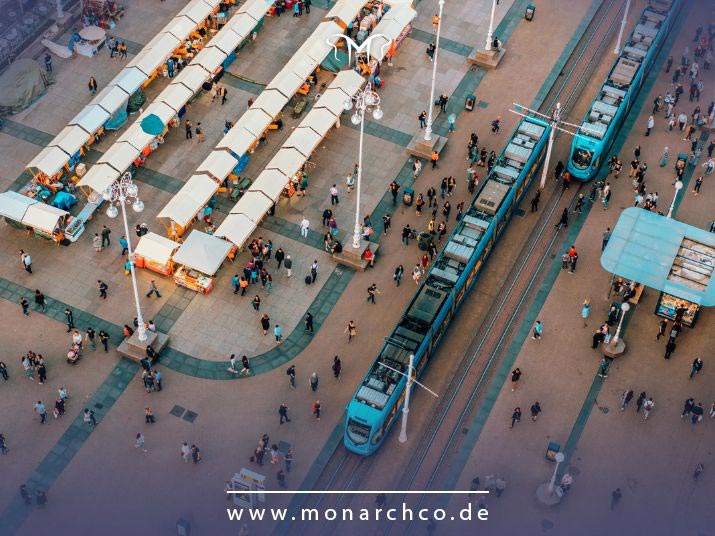
Types of Tickets in the German Public Transport System
The types of tickets in the urban transport services in Germany are as follows:
Single Journey Ticket (EinzelTicket)
Single journey tickets (Einzelticket) are used for one trip in one direction and usually have a specific validity period.
Day Ticket (TagesTicket)
Day tickets (Tageskarte) allow passengers unlimited travel on the public transport system throughout Germany for one day.
Group Ticket (GruppenTicket/GruppenTagesTicket)
Group tickets (Gruppenticket) are designed for groups of several people and often offer discounts for group travel.
Promotion Tickets (Promotion Tickets)
Promotion tickets (Promotion Tickets) in Germany allow passengers to use public transport services at affordable prices and under special conditions. These tickets are often designed for one-day or short-term trips and are very popular due to their flexibility and reasonable prices.
Regional Day Ticket (Länder-Ticket)
These tickets are designed for one-day trips within a specific state (Land) in Germany and allow passengers unlimited use of the public transport system within that state. These tickets are valid for regional trains (RE, RB), suburban trains (S-Bahn), metro, trams, and buses within the state from early morning until midnight on the same day.
Weekend Ticket (Schönes-Wochenende-Ticket)
These tickets are designed for unlimited travel on Saturdays or Sundays throughout Germany. They allow travel on regional trains (RE, RB), suburban trains (S-Bahn), buses, and trams across all German states. Each ticket is valid from midnight until 3:00 AM the next day.
Day Ticket Across Germany (Quer-Durchs-Land-Ticket)
These tickets are designed for one-day trips across Germany and allow passengers unlimited travel on regional trains (RE, RB), suburban trains (S-Bahn), and sometimes local trains (IRE). Each ticket is valid from 9:00 AM until 3:00 AM the following day on weekdays and from midnight until 3:00 AM the following day on weekends and public holidays.
InterCity Transport Ticket
These tickets are designed for intercity travel on InterCity (IC) and InterCity Express (ICE) trains. They cover intercity travel across Germany and sometimes neighboring countries.
Deutschland Ticket
This ticket allows passengers unlimited travel across Germany's public transport system. It is sold on a monthly basis and is very cost-effective, especially for frequent public transport users. Each monthly ticket is valid from the beginning to the end of the month.

Comparison of Deutschland Ticket Prices Across German Cities
The Deutschland Ticket is a national pass valid for use across Germany, with a fixed and uniform price. Therefore, the price of this ticket is the same in all German cities and does not vary. Designed to allow travelers unlimited use of all public transportation throughout the country.
Tips for Using Public Transportation in Germany
Using public transportation in Germany can be an efficient and convenient experience, but certain guidelines should be followed and local regulations observed. Here are some tips for optimizing your use of the public transportation system in Germany:
-
Always purchase your ticket before boarding the vehicle. In most public transportation systems, buying a ticket after boarding is not allowed.
-
Paper tickets must be validated before use in validation machines (Entwerter) located at stations or inside vehicles.
-
If you have purchased your ticket through mobile apps or websites, keep the digital ticket on your smartphone for inspection by control officers if needed.
-
Timetables for vehicle departures are available at stations and online. Various apps like DB Navigator provide up-to-date information on German train schedules and routes.
-
Vehicles are typically more crowded during peak traffic hours (usually mornings and evenings). If possible, plan your trips during off-peak times.
-
Ensure your ticket is valid for the route and mode of transport you are using, as using an invalid ticket can result in fines.
-
Most regional trains and some city trains allow bicycles onboard, but an additional ticket is required for bike transport.
-
Use available maps, including metro maps at stations and inside vehicles, to navigate your route.
-
Be cautious with your personal belongings on public transportation and at stations. Avoid leaving bags and valuables in unsuitable places.
Advantages of Transportation Systems in Germany
Public transportation in Germany offers numerous advantages, making it one of the best public transportation systems globally. Some of these advantages include:
-
Efficient and precise scheduling.
-
Extensive coverage of rail and road networks with access to remote areas.
-
Environmentally friendly system.
-
Comfort and modern amenities.
-
Affordable costs and diverse ticket options.
-
High security standards.
-
Contribution to reducing urban traffic.
-
Easy access to information.
-
High flexibility.
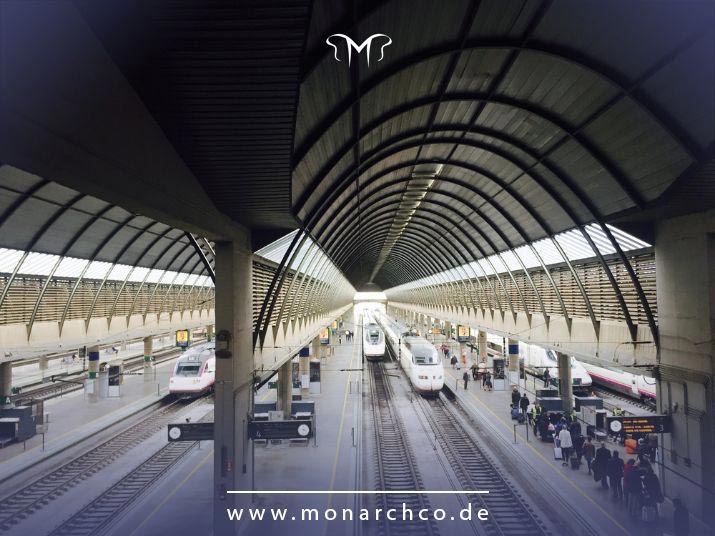
Public Transportation Apps in Germany
Public transportation apps in Germany include the following:
● DB Navigator: Official app of Deutsche Bahn for high-speed, intercity, and regional trains.
● MVG Fahrinfo München: Official app for public transport and trams in Munich.
● BVG Fahrinfo: Official app for public transport and metro in Berlin.
● HVV: Official app for public transport covering Hamburg city buses.
● VVS Mobil: Official app for public transport in Stuttgart.
● RMV: Official app for public transport in the Rhine-Main region (Frankfurt and surroundings).
● VRR: Official app for public transport in the Rhine-Ruhr region (Dortmund, Düsseldorf, and surroundings).
● VGN: Official app for public transport in Nuremberg and Franconia region.
● SWM Magdeburg: Official app for public transport in Magdeburg.
● NextBike: Bike-sharing app available in many cities across Germany.
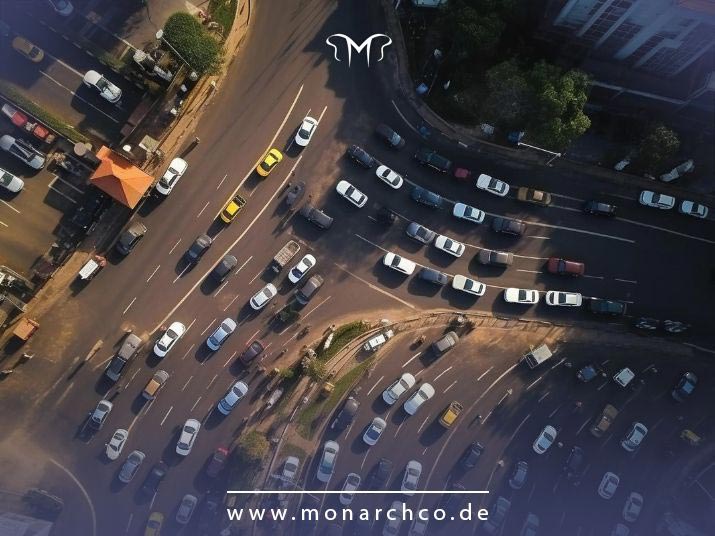
Enjoying Travel with Public Transportation in Germany
Traveling with public transportation in Germany is a pleasant and comfortable experience. This system allows passengers to easily and confidently reach their destinations due to its high efficiency, precise scheduling, and diverse modes of public transport. Modern conveniences such as comfortable seating, air conditioning, Wi-Fi, and various services at stations and on public vehicles are benefits of this system. Public transportation costs in Germany are also very affordable. These factors, along with a commitment to environmental sustainability and reducing urban traffic, make traveling with public transportation in Germany an enjoyable and memorable experience.
Conclusion
The public transportation system in Germany provides passengers with a comfortable and enjoyable experience, thanks to its efficiency, accuracy, extensive coverage, and modern amenities. This system includes high-speed trains, advanced metros, efficient buses, and trams, making traveling with public transport in Germany enjoyable. Traffic and public transportation in Germany are at odds with each other, and this system helps reduce traffic.


